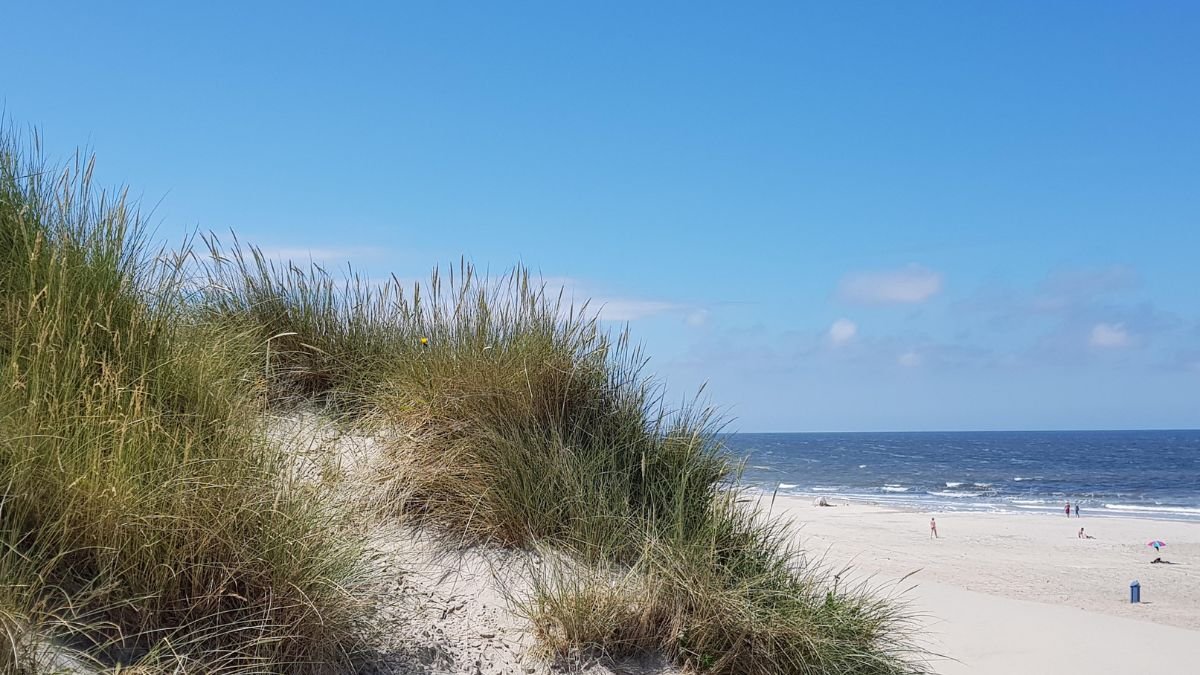Introduction
Ever wondered where you can experience the perfect blend of adrenaline and breathtaking scenery? Brazil offers some of the world’s most exhilarating landscapes for off-road motorcycling, where rugged terrain meets untouched beauty. One of the most exciting activities is Riding Sand Dunes, which allows riders to experience the thrill of navigating through these stunning environments.

From vast golden expanses that stretch endlessly under the sun to challenging dirt trails winding through lush vegetation, this country is a paradise for thrill-seekers.
Each ride is an invitation to explore diverse environments, from rolling hills to dramatic cliffs, all while feeling the rush of the wind and the thrill of adventure. The unique combination of the raw beauty of nature and the thrill of riding a motorcycle makes every journey unforgettable.
Whether you’re a beginner or an experienced rider, mastering the art of riding through these dynamic landscapes requires skill and passion. Each location offers a unique opportunity to test your limits as you immerse yourself in Brazil’s diverse ecosystems. Ready to discover the best places to make this adventure unforgettable?
Key Takeaways
- Brazil is a top destination for off-road motorcycling with stunning natural backdrops.
- The terrain varies from golden expanses to challenging dirt paths.
- Both beginners and experts can find trails suited to their skill level.
- The experience combines technical riding with breathtaking scenery.
- Each location offers a unique adventure in diverse ecosystems.
Why riding a motorbike on sand dunes is an unmissable adventure
Few experiences match the raw excitement of navigating shifting landscapes on two wheels. Unlike traditional trails, where paths are predictable, dunes demand constant adaptation and quick decision-making. The ever-changing terrain requires riders to stay alert and responsive, making each ride a thrilling challenge.
Every ripple and slope tells a story—one that riders like Rivermobster learned to decode under chEFF’s guidance. “Reading the sand,” as experts call it, turns a ride into a dialogue with nature, allowing riders to feel the pulse of their environment.
Understanding the nuances of the sand can significantly enhance the riding experience on a motorcycle, transforming a simple journey into an exhilarating adventure filled with discovery.
Mental focus is non-negotiable. Leading a group across unstable terrain, as Rivermobster described, means anticipating changes in texture and wind patterns. This heightened awareness is crucial, as one misjudged climb or descent can alter the entire route dramatically.
It requires not just quick reflexes but also a strategic mindset, where every decision can impact the safety and enjoyment of the ride. This isn’t just about speed—it’s about strategy, foresight, and the ability to read the landscape in real-time.
Teamwork elevates the thrill. Riders rely on hand signals and radios to coordinate their movements, creating camaraderie forged in the adrenaline of the moment. Effective communication is vital, as it ensures that everyone is on the same page and can react swiftly to unexpected challenges.
Brazil’s vast expanses, like Lençóis Maranhenses, add drama with their ever-changing views. Here, the scenery shifts with the wind, offering a fresh challenge each time. The ability to work together seamlessly not only enhances safety but also enriches the experience, turning each ride into a shared adventure filled with laughter and support.
Prefer pavement or forest trails? Dune riding flips the script. Instead of battling roots or rocks, you’re dancing with gravity and granular surfaces, where every movement counts.
The fluidity of the sand requires a unique riding style that emphasizes smooth transitions and controlled maneuvers. It’s a test of balance, patience, and trust in your machine—and the payoff is a view few ever witness.
The thrill of conquering a steep dune or navigating through soft sand can be exhilarating, providing a sense of accomplishment that is hard to replicate in more conventional riding environments.
Essential Gear for Riding Sand Dunes
The right gear can make or break your off-road adventure in Brazil’s challenging landscapes. Unlike paved roads, loose terrain demands specialized equipment to ensure safety and performance.
For instance, investing in high-quality tires specifically designed for sand can significantly improve traction and control, enabling riders to navigate unpredictable surfaces more effectively.
Additionally, protective clothing, such as reinforced jackets and pants, not only provides safety against falls but also shields against the sun’s harsh rays, which can be particularly intense in open dune areas. Here’s what you need to conquer the dunes like a pro.

Protective Equipment: Helmets, Goggles, and More
Full-face helmets are non-negotiable. They shield your face from flying debris and sudden falls, which can occur frequently in off-road environments. These helmets are designed to provide maximum coverage and protection, reducing the risk of injury during unexpected incidents.
Pair them with anti-fog goggles to maintain visibility in dusty conditions, as the fine particles can obstruct your view and make riding dangerous.
Moisture-wicking gloves and knee pads add extra protection, ensuring that you remain comfortable and safe during your ride. The gloves should offer a good grip on the handlebars while also allowing for breathability to prevent overheating.
Cardo Systems recommends gear that strikes a balance between breathability and durability, allowing you to ride longer without discomfort. “Sand can grind down equipment fast,” notes an off-road expert, emphasizing the need for quality materials that can withstand harsh conditions.
Choosing the Right Dirt Bike for Sand Terrain
Lightweight models with high torque, like the Honda CRF450X, excel in loose terrain due to their design and power-to-weight ratio. Their power helps you climb steep slopes without sinking into the sand, which is a common challenge for riders.
Avoid heavy bikes—they struggle on shifting surfaces, making it difficult to maintain control and speed.
- Opt for a 2-stroke engine for quick acceleration, as this type of engine provides a burst of power that is essential for navigating through sandy conditions.
- Make sure the motorcycle has a reinforced frame for stability, as this will help absorb shocks and provide a solid base when riding on uneven terrain.
Paddle Tires and Optimal Tire Pressure
Paddle tires grip the sand better than standard treads, providing superior performance in loose and shifting terrains. These specialized tires feature large, scooped treads that allow for increased surface area contact, helping to prevent sinking and enhancing maneuverability.
Adjust pressure between 3–8 psi depending on conditions:
- Dry sand: 3–5 psi for maximum flotation, allowing the bike to glide over the surface rather than digging in.
- Wet sand: 6–8 psi for added traction, ensuring better grip and control when the ground is softer and more slippery.
“Rigid tires are a recipe for getting stuck. Always deflate your tires slightly when riding in the dunes, as this can significantly improve your motocycle’s performance and overall riding experience.
—Cardo Systems
Pro tip: Use a Cardo Packtalk ORV for seamless group coordination. Radios keep riders connected in vast, unfamiliar areas, making it easier to communicate about terrain changes or obstacles, which is crucial for safety and enjoyment during rides.
Mastering sand dune riding techniques
Navigating Brazil’s shifting landscapes requires more than just skill—it demands an understanding of nature’s subtle cues. Whether you’re tackling steep slopes or loose surfaces, the right techniques turn challenges into triumphs.
Reading the Sand: Wind Ripples and Dune Shapes
Wind patterns leave clues. Ripple marks indicate soft patches, while compacted areas offer stability. The size and shape of these ripples can tell you much about the ground beneath your tires; for instance, larger ripples may suggest deeper, softer sand that could impede your progress, while smaller, more compact ripples often indicate firmer ground.
As chEFF taught, *”the steeper the ripple, the softer the ground.”* Therefore, understanding these nuances is vital for making informed riding decisions.
Additionally, it’s essential to pause at ridges to scout ahead. This *”ridge check”* ensures safer paths for your group, allowing you to assess potential hazards and choose the best route through the ever-changing landscape.

Climbing and Descending Dunes Safely
Angles are everything. Approach slopes at 30–45 degrees to maintain momentum without sinking. This angle not only helps in keeping your speed but also reduces the risk of losing control.
For descents, maintain a balanced weight distribution and avoid sudden braking, as abrupt changes can lead to a loss of traction. Rivermobster recalls, *”A 40-degree climb felt impossible until I trusted the bike’s torque.”
* Proper body positioning, such as leaning slightly forward while climbing, can further enhance your stability and grip on the surface. Additionally, remember that every dune is unique; adjusting your approach based on the terrain’s condition is crucial for a safe ride.
How to Recover from a Stuck Bike
Digging out wastes energy. Instead:
- Reverse gently to regain traction.
- Place traction pads or branches under tires.
- Pour water to temporarily harden the surface.
“Patience beats brute force. Work with the terrain, not against it.”
—Off-Road Pro Tip
Master these methods, and even the trickiest terrain becomes part of the adventure.
The 3 best spots to ride a motorbike in the sand dunes of Brazil
Brazil’s diverse terrain offers some of the most thrilling off-road experiences in the world. Each spot combines unique challenges with breathtaking views, making them must-visit destinations for riders. Here are three standout locations to fuel your adventure.
In addition to their scenic beauty, these locations provide opportunities for riders of all skill levels to push their limits and enjoy the thrill of the ride. Whether you are an experienced rider seeking adrenaline or a beginner looking to learn, these spots have something special to offer.
Lençóis Maranhenses National Park
Known for its surreal lagoons amid rolling dunes, this park is a paradise for photographers and riders alike. The terrain shifts constantly, demanding technical skill and adaptability.
Riders can navigate through a labyrinth of white sand and crystal-clear waters, making every turn an exhilarating experience.
The vibrant colors of the lagoons, especially during the rainy season, create a stunning backdrop for both sightseeing and photography. Local tip: Avoid midday tours—early mornings offer cooler temperatures and softer light, improving both the riding experience and the quality of your photos.
Jericoacoara Dunes
Beginner-friendly trails wind through coastal villages, with sunset rides as the highlight. The compacted sand near the ocean provides stable paths, while inland areas test balance and skill, making it an ideal environment for novice riders to gain confidence.
Along the way, riders can enjoy breathtaking views of the coastline, with the sun dipping below the horizon, creating a spectacular display of colors.
It’s a perfect spot to hone skills while soaking in ocean views, and local guides often share insights about the area’s rich culture and history, enhancing the overall experience.
Genipabu Dunes, Natal
Famous for buggy tours and steep climbs, Genipabu delivers adrenaline-packed scenery that captivates every visitor. The dunes here are taller than most, rewarding climbs with panoramic coastal vistas that stretch for miles.
Adventurous riders can explore the diverse terrain, from rolling hills to steep descents, each offering a unique challenge. Night rides under the stars add an extra layer of magic to the trip, providing a thrilling way to experience the dunes after dark. The shimmering sands, illuminated by moonlight, create an enchanting atmosphere, making it a memorable experience for all who partake.
| Spot | Best For | Global Comparison |
|---|---|---|
| Lençóis Maranhenses | Technical rides, photography | Similar to Dumont Dunes (USA), but with lagoons |
| Jericoacoara | Beginners, sunset views | Like Pismo Beach (USA) with more trails |
| Genipabu | Steep climbs, buggy tours | Comparable to Imperial Dunes (USA) in height |
Whether you seek technical challenges or scenic rides, Brazil’s landscapes deliver. Each place offers a distinct way to experience the thrill of off-road motorcycling.
Safety Tips for Group Riding Sand Dunes
Group rides across Brazil’s vast landscapes amplify both safety and excitement. Navigating unpredictable terrain becomes smoother with teamwork and clear protocols in place.
When riding in a group, you not only benefit from the camaraderie of other riders, but you also benefit from shared knowledge and experience. Here’s how to make sure everyone stays on track—literally and figuratively.
The importance of riding a motorcycle in a group
Assign roles before hitting the trail. A leader scouts ridges for safe paths, while the last rider ensures no one falls behind. This structured approach fosters accountability and enhances safety. Rivermobster’s “last guy” rule prevents stragglers—*”If the last guy’s there, let it rip!”*
This ensures that the group maintains a steady pace while also allowing for quick stops when necessary. Having designated roles also helps in managing the group effectively, as each member knows their responsibilities and can react swiftly to any situation that arises during the ride.
Featureless expanses make solo rides risky. Groups can share resources like water or tools if bikes get stuck, which is invaluable in remote areas where help may be far away. Additionally, extra eyes spot hidden hazards more quickly, such as sudden drops or wildlife crossing the path.
The collective awareness of the group can significantly reduce the risk of accidents and enhance the overall experience. Additionally, riding in a group allows for the sharing of knowledge about the terrain and potential hazards, which can be crucial for less experienced riders.
The support of others builds confidence and also creates a more enjoyable and safer environment for everyone involved.
Communication Tools for Coordination
Radios like the Cardo Packtalk ORV keep everyone connected. Hand signals are effective for short distances, but wind and dust often obscure them, making them less effective. Pre-ride briefings should cover:
- Emergency protocols (e.g., breakdowns or injuries)
- GPS waypoints for regrouping spots
- Code words for sudden stops or dangers
“Static-filled comms cost us 20 minutes once. Now we test gear before every ride.”
—Cardo Systems
Navigating Unfamiliar Dune Trails
New routes demand extra caution, as unfamiliar terrain can present unexpected challenges. The leader should pause at high points to reassess the path, allowing everyone to gather and evaluate the best course of action.
Wind shifts can erase tire marks, so GPS tracks are lifesavers, providing crucial navigation support in the ever-changing landscape.
Stay together in open areas, as maintaining proximity is crucial for safety. Splitting up can lead to disorientation and increased risk. What appears to be a shortcut may be a dead end, leading to unnecessary frustration and potential hazards.
Trust the group’s collective judgment over solo instincts, as working together enhances the riding experience and ensures that everyone stays on track.
Learn more about Motorcycle Repair Services.
Easter Eggs
Conclusion
Exploring Brazil’s wild terrains on two wheels isn’t just a ride—it’s a life-changing adventure. Like Rivermobster discovered, mastering these landscapes builds confidence and unforgettable memories.
Plan your trip to the top spots mentioned, but always follow local rules. Respect nature, and it will reward you with breathtaking views and thrilling challenges.
As the saying goes, “Of all the roads you take in life, make sure some of them are dirt.” Whether it’s your first time riding a motorcycle or you’ve been riding for years, Brazil’s dynamic terrain offers the perfect way to test your skills.
Ready to shift gears? Pack your gear, gather your crew, and hit the trails. The adventure of a lifetime awaits.
FAQ
What makes sand dune riding different from regular off-roading?
The soft, shifting terrain requires unique skills, such as weight distribution control and throttle finesse. Unlike hard-packed trails, loose surfaces demand constant adjustments.
How do paddle tires improve performance on dunes?
These specialized tires feature wide scoops that dig into loose terrain, providing better traction. Standard knobbies often struggle in deep, fine-grained conditions.
What is the ideal tire pressure for sandy terrain?
Most riders reduce pressure to 8-12 PSI for better flotation. Lower pressure increases surface area, preventing the bike from sinking too deeply into unstable ground.
Why is group riding recommended for dune excursions?
Remote locations and challenging conditions make safety in numbers a crucial factor. Teams can assist with recoveries, share navigation duties, and provide emergency support if needed.
What communication tools work best in dune environments?
Hand signals remain reliable when visual contact exists. For longer distances, rugged two-way radios like Motorola T600 withstand sandy conditions better than smartphones.
How do wind patterns affect dune riding strategy?
Prevailing winds continually reshape crests and slip faces. Riders should approach the steepest slopes from the windward side, where the sand remains more compact and stable.
What emergency gear should always be packed?
Essentials include a GPS device, extra water, tow straps, and a compact shovel. Desert environments demand preparation for both mechanical issues and personal hydration needs.
Why choose Brazil for this activity?
Diverse locations, such as Lençóis Maranhenses, offer unique landscapes where freshwater lagoons form between the dunes. The country combines challenging terrain with breathtaking scenery.
How often should beginners take breaks during rides?
New riders fatigue quickly maneuvering through unstable terrain. Plan 15-minute rests every hour to maintain focus and prevent errors due to exhaustion.




